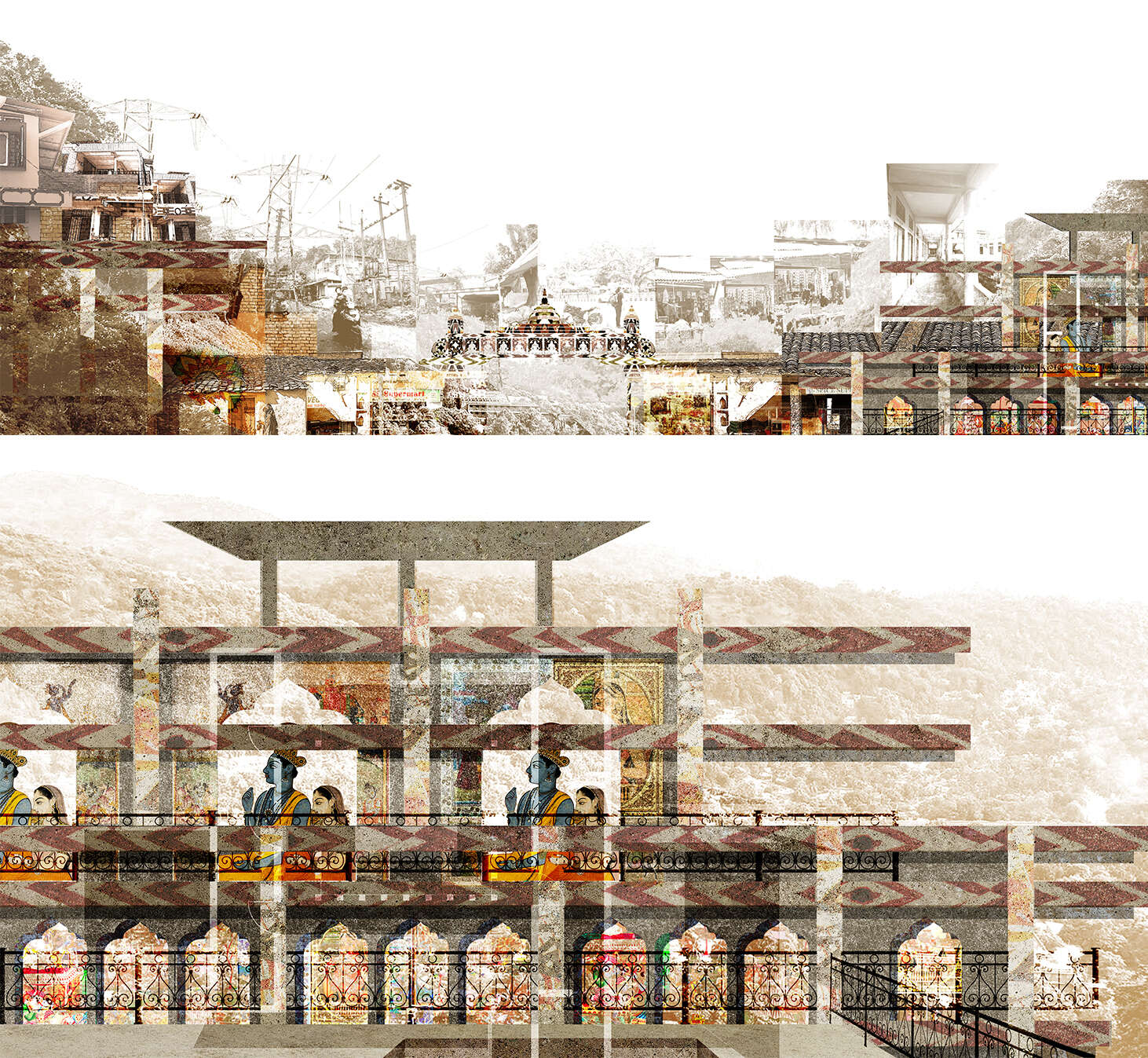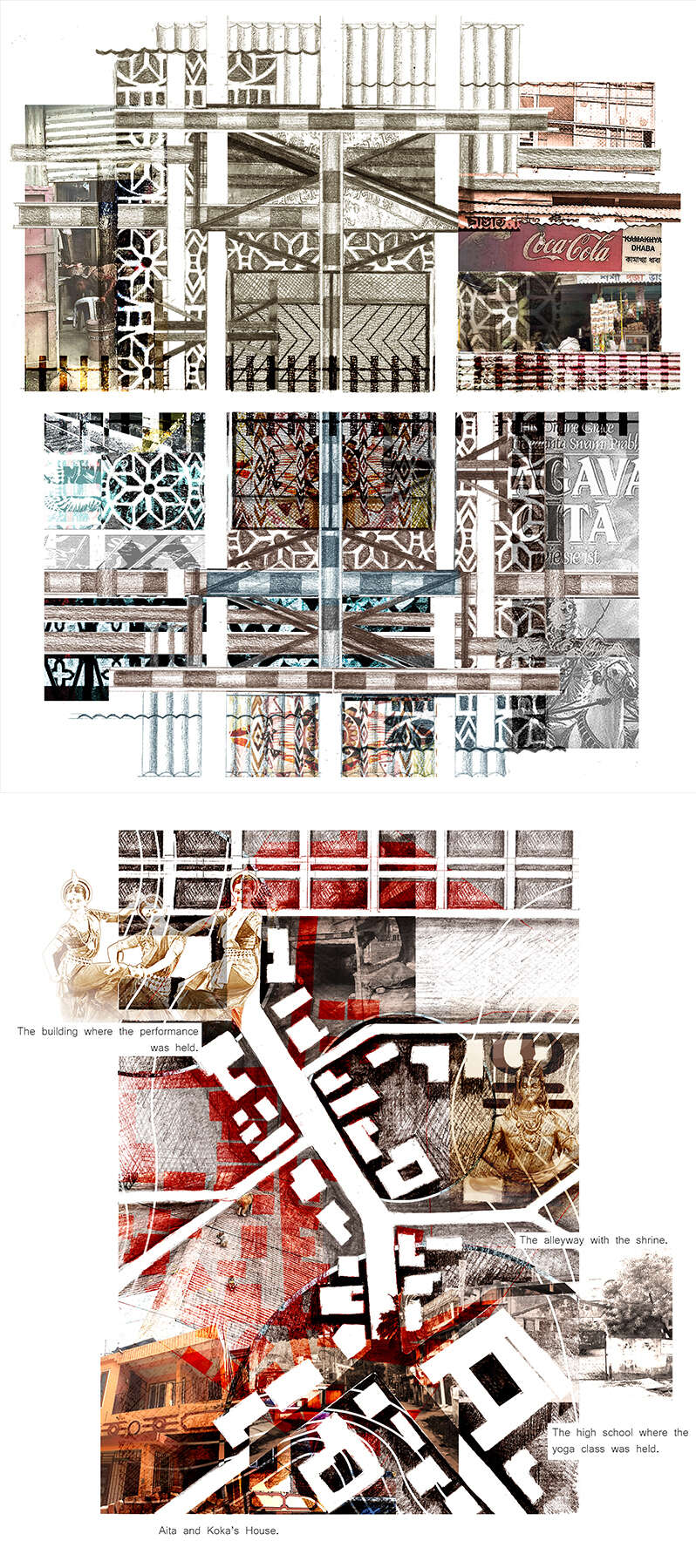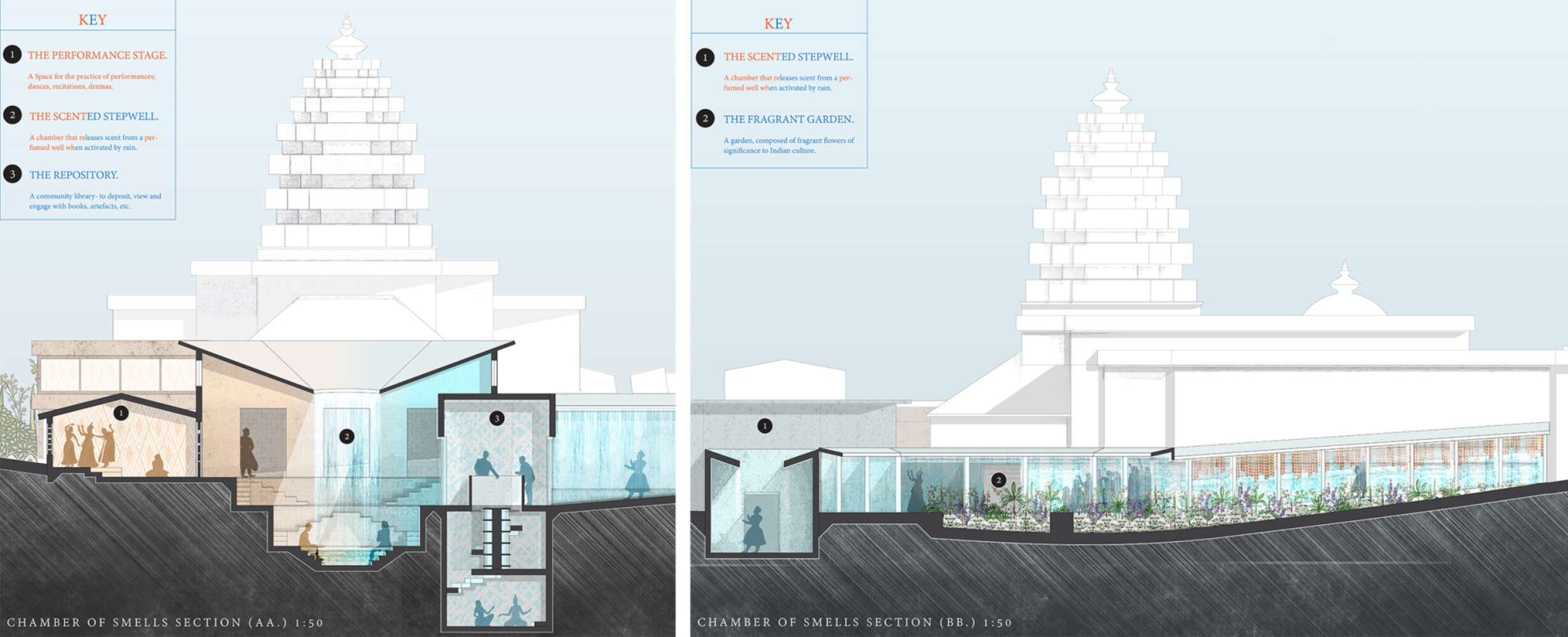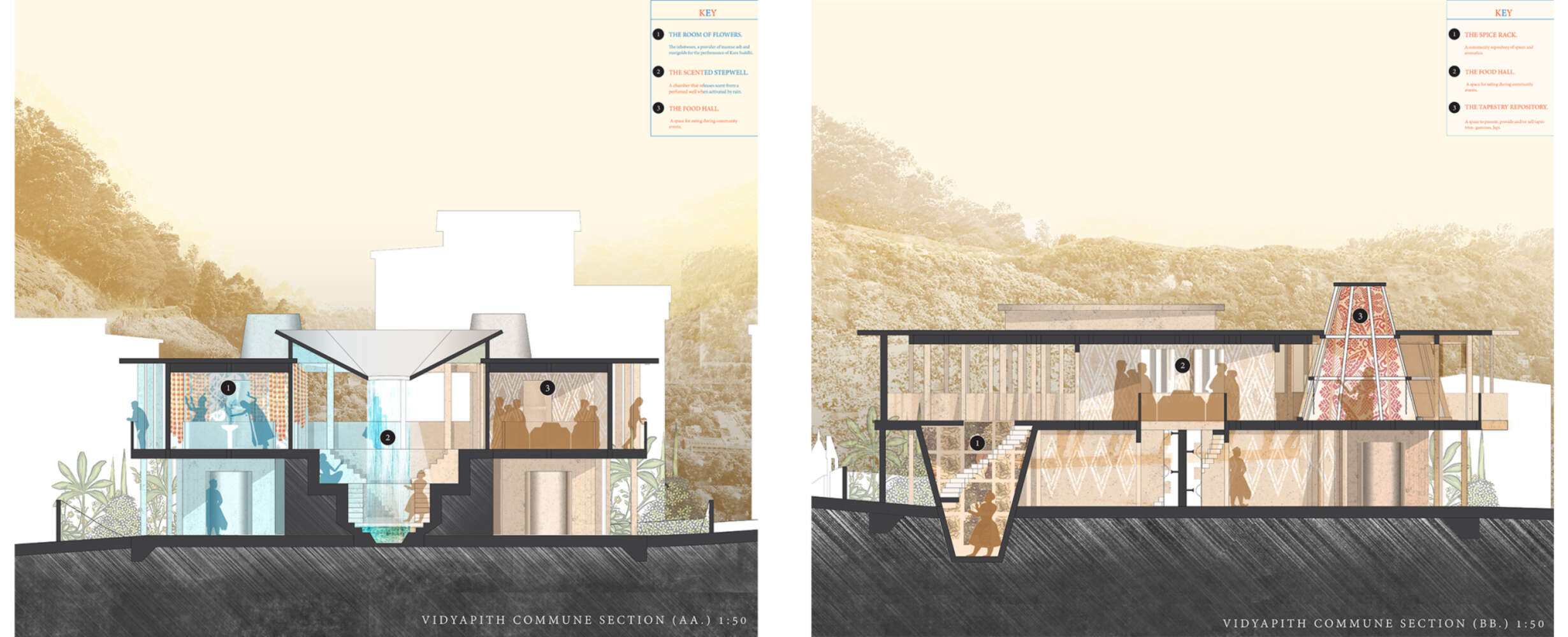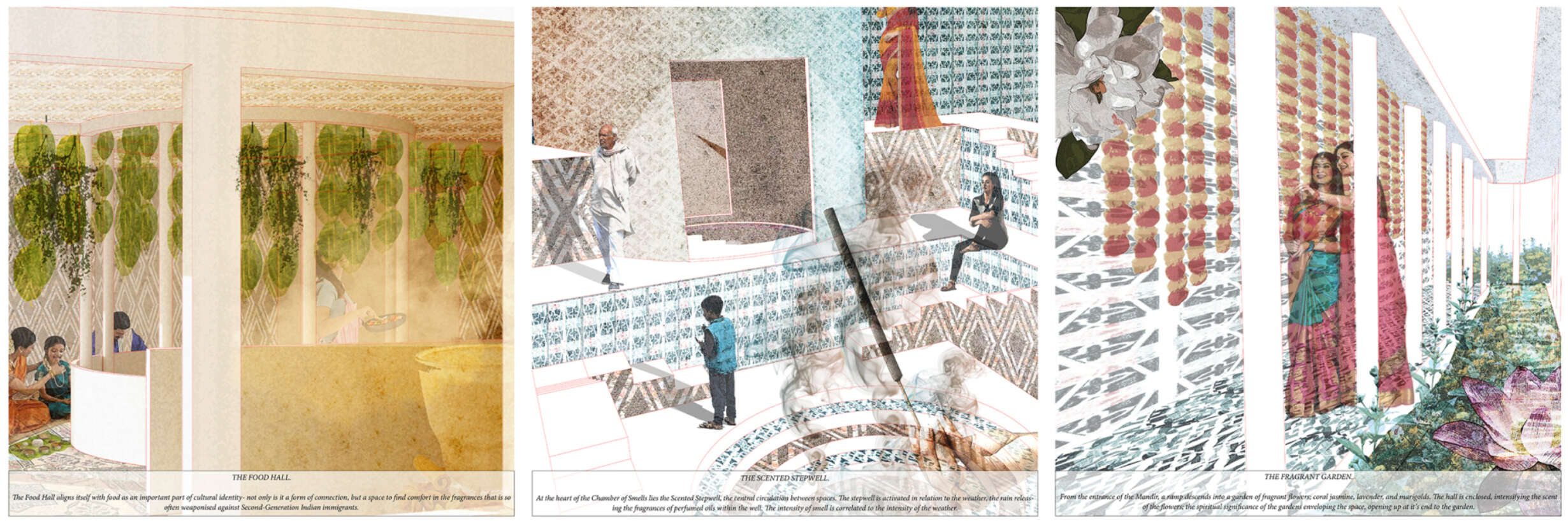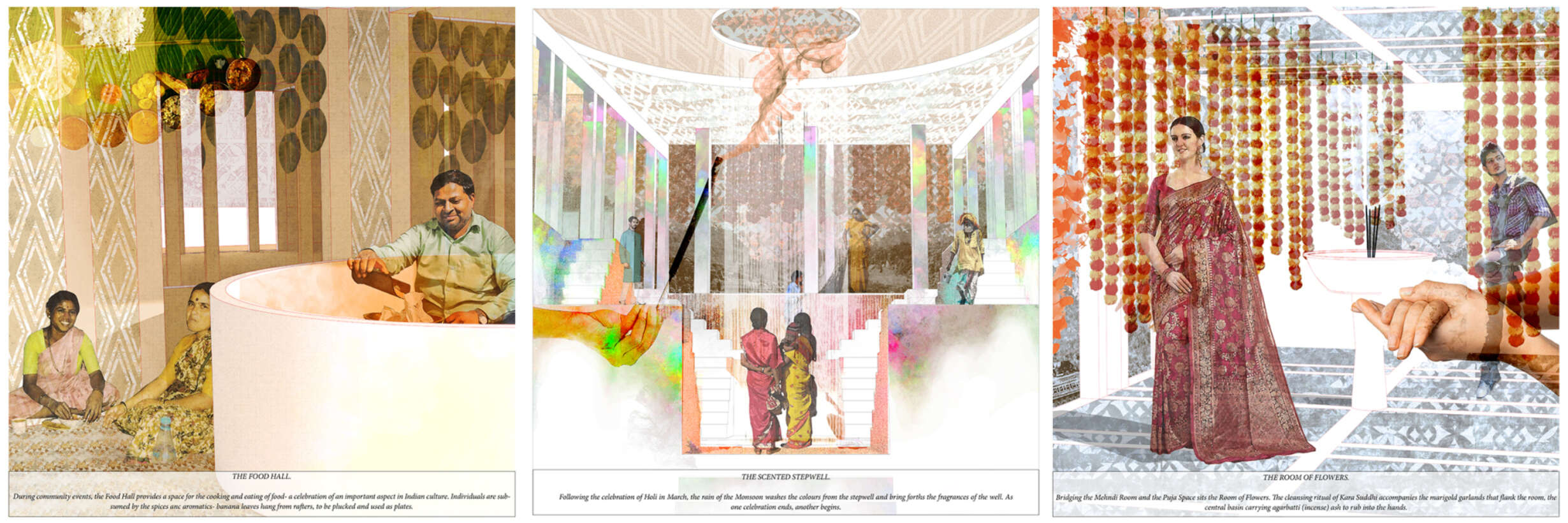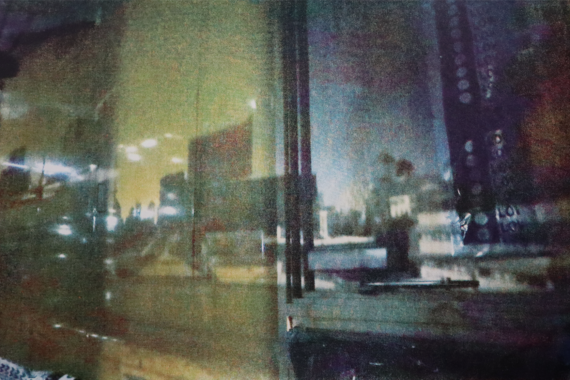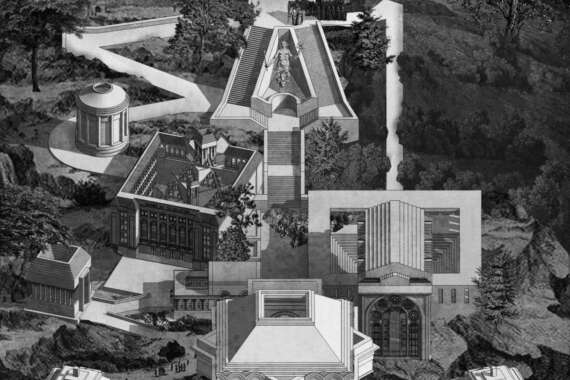Where You From? Bridging the Cross-Cultural Identities of India and Aotearoa
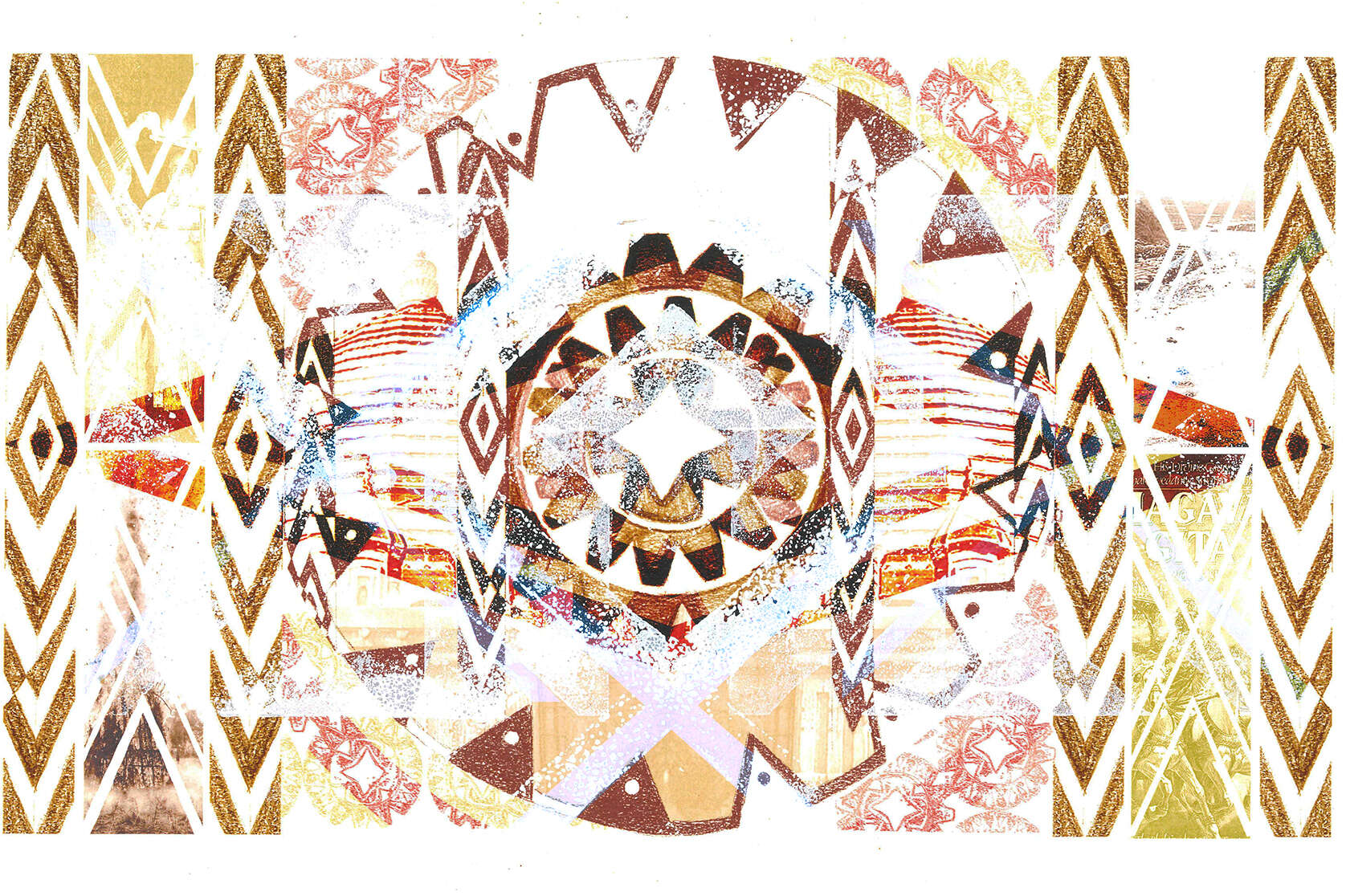
To be a part of diaspora is to live between two worlds, a liminal space in which identity is constantly in flux, never stable. This is especially the case for second-generation immigrants, those born outside of their motherland, as they inherit this condition from birth. This “cultural no man’s land,” as it is described in artist Riz Ahmed’s spoken word “Where You From,” can be a difficult space to navigate, traversing a world in which they are Othered to both cultures they belong to.
This thesis draws from personal experiences as a second-generation Indian immigrant to envision a cross-cultural bridging of architectural interventions in both India and Aotearoa, predicated on the notion of memory as the avenue in which cultural identity is experienced.








